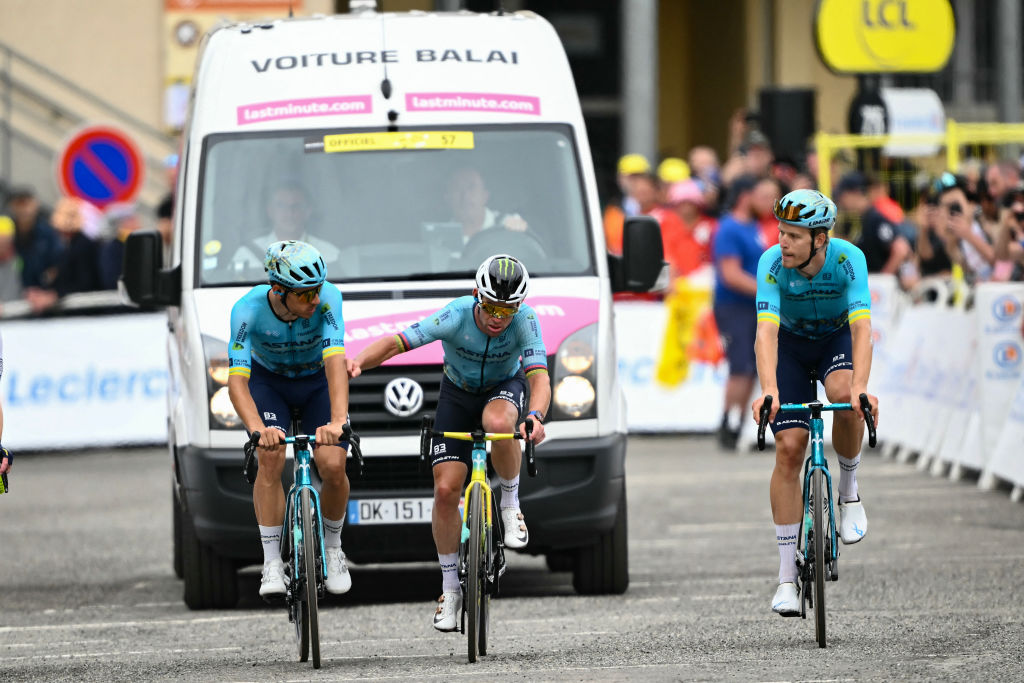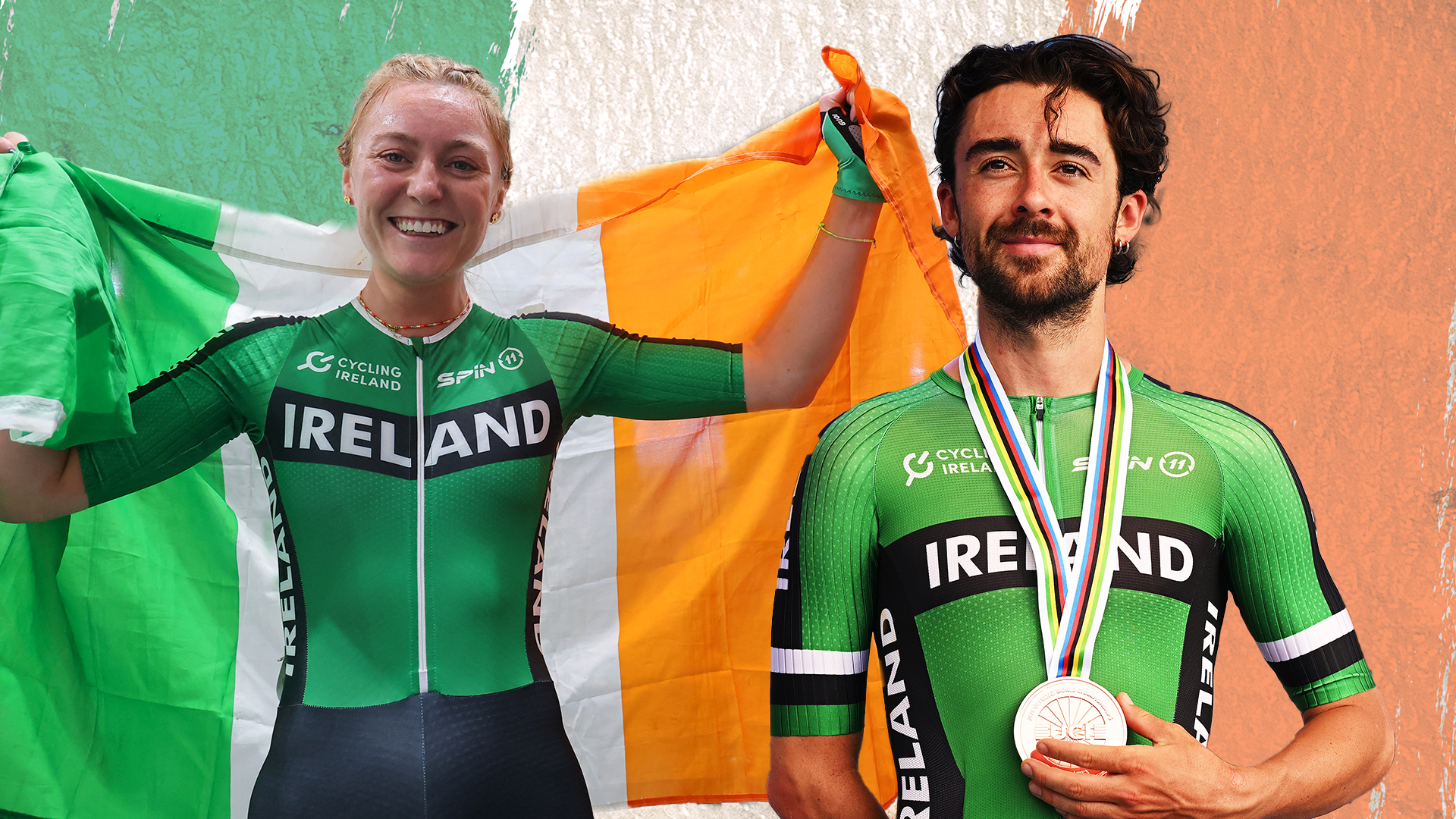How do time cuts work in the Tour de France?
Riders face being sent home from the race if they finish outside the daily limit

The Tour de France is arguably one of the toughest challenges in elite sport – three weeks in the saddle, riding 5-6 hours a day, along thousands of kilometres of roads and ascending some of Europe’s most iconic (and savage) peaks.
While the media attention focuses on the action at the front of the race, there’s little consideration given to those at the back, who are embroiled in their own battle – trying to avoid the infamous time cut.
What is the time cut, and why is it necessary?
The time cut is used by the race organisers, ASO, as a means of encouraging the spirit of the race, and deterring those who might prefer to coast along in the wheels of others for three weeks. It’s designed to ensure that every participant is up to task.
The time cut varies by stage, and is dependent on two key factors – the difficulty of the stage, and the average speed of the winner. It’s calculated daily and although it’s not the last word – the commissaires can exercise discretion where necessary – generally speaking, if you miss the time cut for the day, you must leave the race.
Spare a thought then for the riders who find themselves battling the time cut.
As a rule which comes into effect most prominently in the big mountain stages, when the pure climbers and GC contenders are pushing the pace at the front, those most affected by the time cut are usually sprinters and their teams, who are less specialised for HC climbs. Lead-out trains must switch roles and tow their most valuable assets – their designated sprinters – over the lofty peaks in time to avoid them falling victim to the day's cut off.
How is the Tour de France time cut calculated?
Of the two key factors that come into play when calculating the day’s time cut, one is decided prior to the race by the organisers. The difficulty of each stage is determined and a number from 1-6 assigned – also known as a ‘coefficient’. These figures are published in the race road book. Completely flat stages would be given a rating of 1, through to the most stringent of days in the mountain being rated a 5. Time trials get a coefficient of 6.
The latest race content, interviews, features, reviews and expert buying guides, direct to your inbox!
The second figure is calculated once the stage winner has crossed the line on any given day. The average speed of the winner is combined with the stage’s coefficient to determine a percentage. This percentage determines the amount of time outside the winner’s final time in which all other participants must cross the line. Anyone outside this percentage will sadly be sent home.
In the 2025 Tour de France, the time cut coefficients for each stage are determined by the difficulty of the course. A tougher course gets a more generous percentage, while easier stages have tighter time limits.
Stage 19 is so tough the organisers have added an extra 2% of the winner's time to the time limit for each of the average speed categories.
Stage | Coefficient |
|---|---|
1 | 1 |
2 | 2 |
3 | 1 |
4 | 2 |
5 | 6 (ITT) |
6 | 3 |
7 | 2 |
8 | 1 |
9 | 1 |
10 | 4 |
11 | 2 |
12 | 4 |
13 | 6 (ITT) |
14 | 4 |
15 | 2 |
16 | 3 |
17 | 1 |
18 | 5 |
19 | 5 +2% |
20 | 3 |
21 | 1 |
Coefficient 1
- 5% if less than or equal to 38 kph
- 6% if 38 kph-40 kph
- 7% if 40 kph-42 kph
- 8% if 42 kph-44 kph
- 9% if 44 kph-46 kph
- 10% if 46 kph-48 kph
- 11% if 48 kph-50 kph
- 12% if more than 50 kph
Coefficient 2
- 8% if less than or equal to37 kph
- 9% if 37 kph-38 kph
- 10% if 38 kph-39 kph
- 11% if 39 kph-40 kph
- 12% if 40 kph-41 kph
- 13% if 41 kph-42 kph
- 14% if 42 kph-43 kph
- 15% if 43 kph-44 kph
- 16% if 44 kph-45 kph
- 17% if 45 kph-46 kph
- 18% if more than 46 kph
Coefficient 3
- 11% if less than or equal to 36 kph
- 12% if 36 kph-37 kph
- 13% if 37 kph-38 kph
- 14% if 38 kph-39 kph
- 15% if 39 kph-40 kph
- 16% if 40 kph-41 kph
- 17% if 41 kph-42 kph
- 18% if 42 kph-43 kph
- 19% if 43 kph-44 kph
- 20% if more than 44 kph
Coefficient 4
- 9% if less than or equal to 31 kph
- 10% if 31 kph-32 kph
- 11% if 32 kph-33 kph
- 12% if 33 kph-34 kph
- 13% if 34 kph-35 kph
- 14% if 35 kph-36 kph
- 15% if 36 kph-37 kph
- 16% if 37 kph-38 kph
- 17% if 38 kph-39 kph
- 18% if 39 kph-40 kph
- 19% if more than 40 kph
Coefficient 5
- 11% if less than 29 kph
- 12% if 29 kph-30 kph
- 13% if 30 kph-31 kph
- 14% if 31 kph-32 kph
- 15% if 32 kph-33 kph
- 16% if 33 kph-34 kph
- 17% if 34 kph-35 kph
- 18% if 35 kph-36 kph
- 19% if more than 36 kph
Coefficient 6
- 25% on stage 5
- 33% on stage 13
How can riders avoid the time cut?
Aside from the obvious – simply riding fast enough – riders can find other ways around the time limit, or at least ways of making their lives a bit easier on difficult days.
Their best bet is banding together in the gruppetto – the group that forms behind the main peloton and works together to try to finish the day ahead of the allotted time cut. Working with other riders is the most reliable way to ensure you don’t drop off the pace entirely.
If a rider falls foul of a mechanical or gets caught up in an accident that prevents them from making the time cut, ASO have the power to make exceptional decisions, at their own discretion. The rules outline this power, as follows: "The commissaires’ jury may in exceptional cases allow one or several particularly unlucky riders to be reinstated in the race, after informing the race directors."
Reinstating a rider depends upon four factors, to be considered by the race jury: the average speed of that stage; in the case of accident or incident the point at which this occurred; the perceived effort made by the affected rider(s) to overcome the setback, along with any blockage of the roads that may have occurred.
All is not lost, then, should a rider find themselves finishing outside the time cut.
Katy Madgwick is a freelance writer and broadcaster, covering multiple disciplines across both men's and women's pro cycling. Head of Creators at Domestique Cycling, Katy has written for a broad range of publications, and is a regular contributor to Cyclist Magazine, Cyclingnews, TNT Sports and The Roadbook Cycling Almanack.
On the broadcast side, she is a co-host of the On Yer Bike podcast, occasional contributor to BBC Radio, and features on CADE Media's Pro Show podcast for the first time in 2025.
She is a lover of all things French and a cyclo-cross obsessive, and probably ought to get on her actual bike more often.
You must confirm your public display name before commenting
Please logout and then login again, you will then be prompted to enter your display name.
